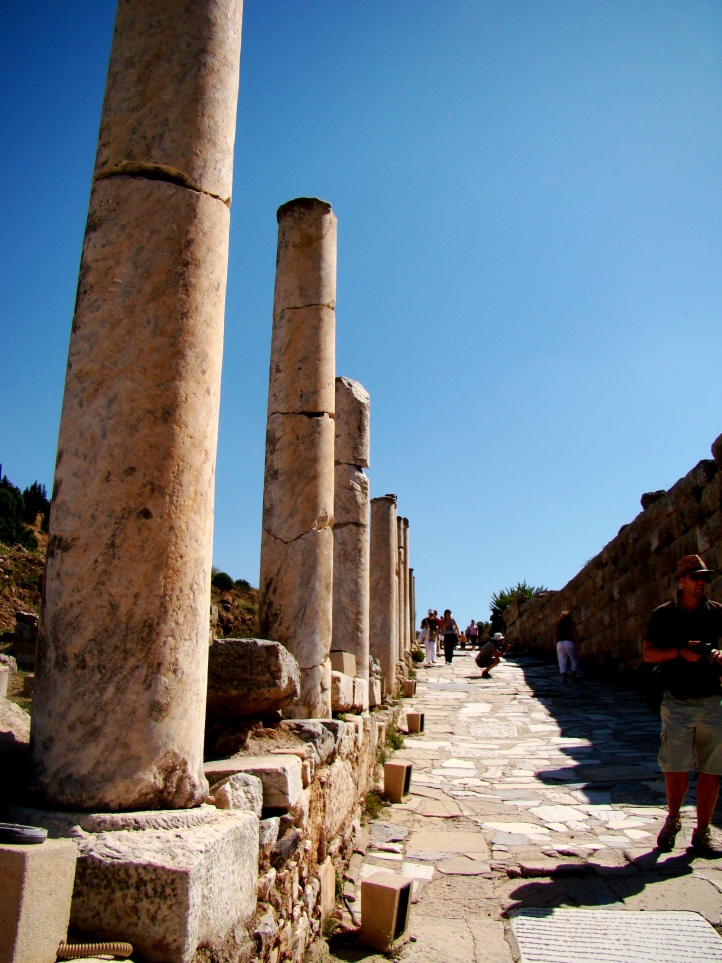
When visiting Ephesus in Turkey I was greeted by the remains of a magnificent ancient culture and people of which today nearly nothing remains. Ephesus was an ancient Greek city on the coast of Ionia, three kilometers southwest of present-day Selçuk. It was built in the 10th century BC on the site of the former Arzawan capital by Attic and Ionian Greek colonists.
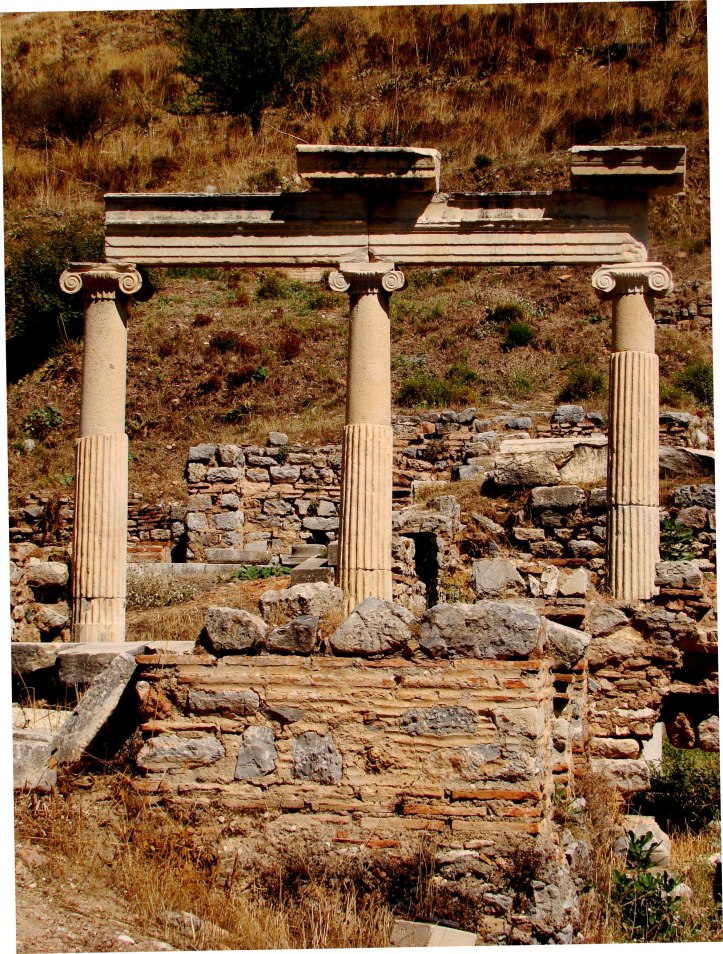
Divus Julius Caesar
According to myth the founder of Ephesus was a prince of Athens named Androklos, who had to leave his country after the death of his father, King Kadros. According to the legend, he founded Ephesus on the place where the oracle of Delphi became reality (“A fish and a boar will show you the way”). Androklos was a successful warrior, and as a king he was able to join the twelve cities of Ionia together into the Ionian League. It was during his reign that the city began to prosper.
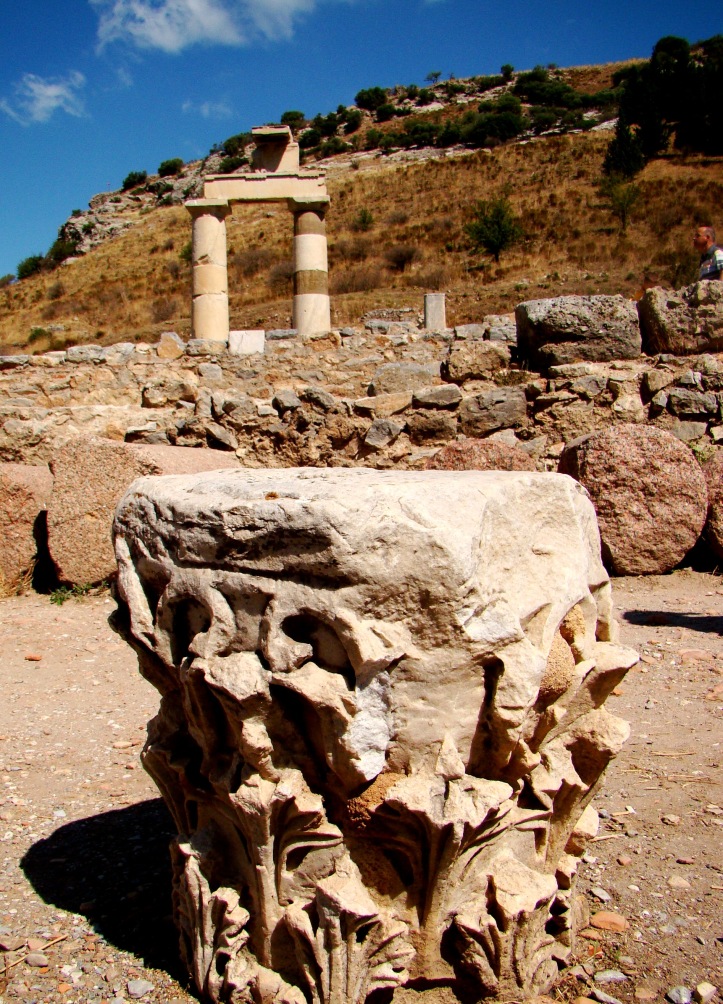
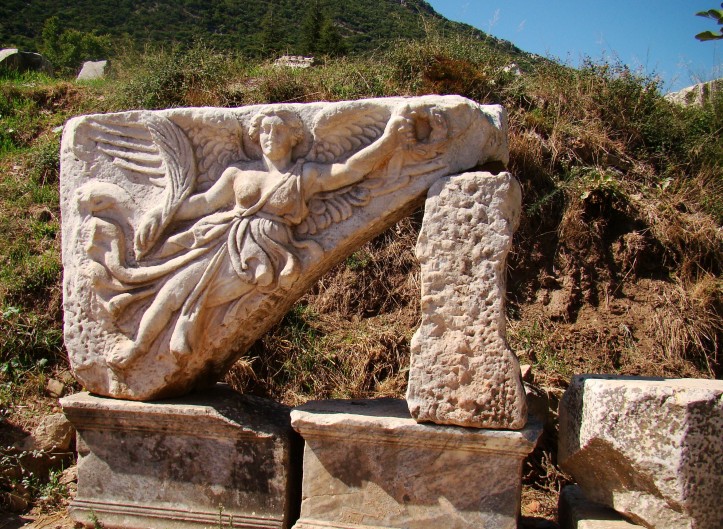
The city Ephesus had many amazing structures but it was famed for the Temple of Artemis which was completed around 550 BC. This Temple is one of the Seven Wonders of the Ancient World although there is scarcely anything left today. The Ephesians were surprisingly modern in their social relations back then. They allowed strangers to integrate, education was valued and through the cult of Artemis, the city became a bastion of women’s rights. Ephesus even had female artists which is unheard of in those days.
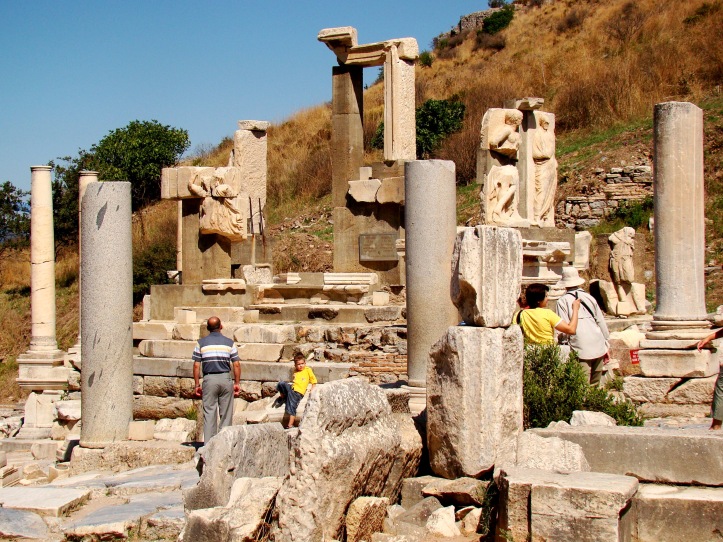
When Alexander the Great defeated the Persian forces in 334 BC, the Greek cities of Asia Minor were liberated. Unfortunately in 356 BC the temple of Artemis was burned down by a lunatic called Herostratus. The inhabitants of Ephesus at once set about restoring the temple and even planned a larger and grander one than the original. The city flourished again after it came under the control of the Roman Republic in 129 BC. According to estimates Ephesus had a population of 33,600 to 56,000 people in the Roman period, making it the third largest city of Roman Asia Minor.
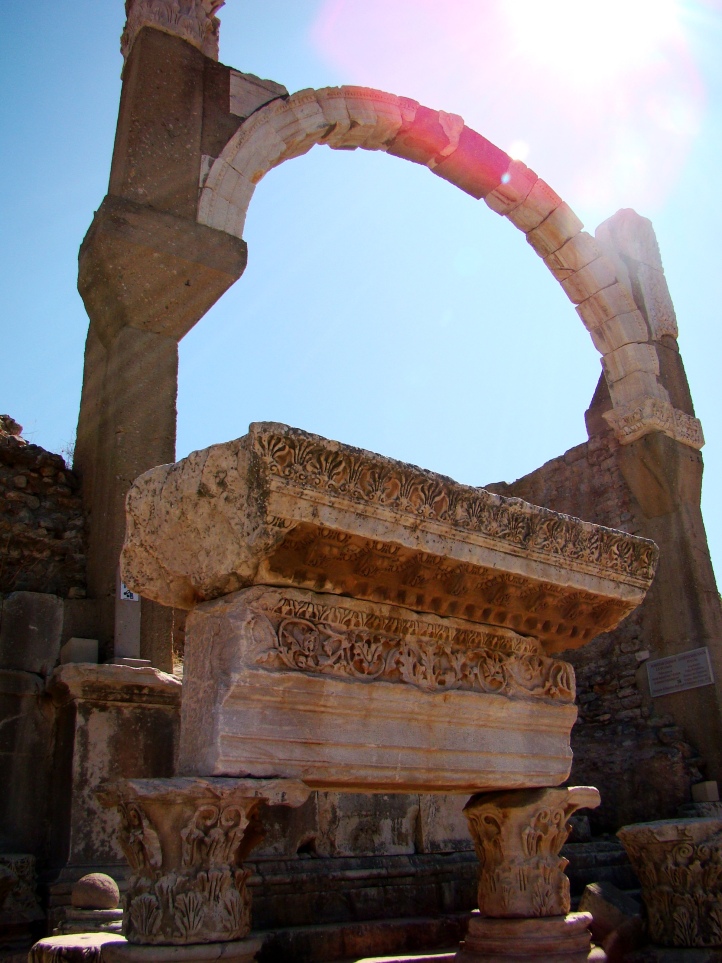
In 268 AD, the Temple was damaged in a raid by the Goths. Emperor Constantine I rebuilt much of the city and its temples after 268 AD and even erected new public baths. Unfortunately, what remained of this amazing temple was destroyed in 401 AD by a mob led by St. John Chrysostom. And then the town was again partially destroyed by an earthquake in 614 AD. There seems to be one disaster after the other where Ephesus is concerned.
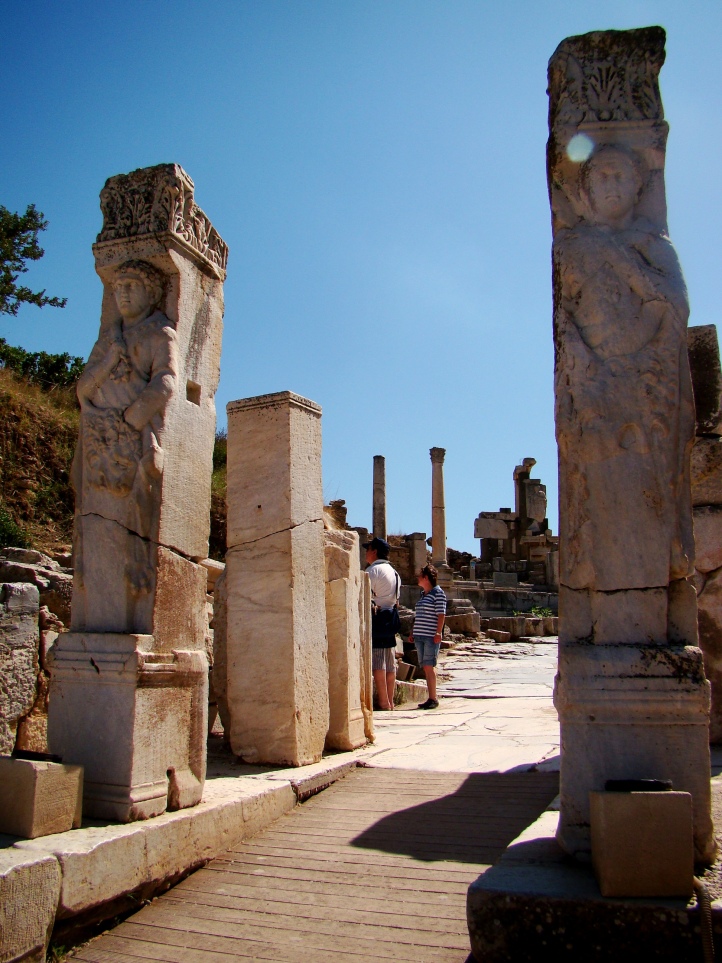
The rest of the history of Ephesus is very vague untill in 1304 the city surrendered to Sasa Bey, a Turkish warlord. It is said that contrary to the terms of the surrender the Turks pillaged the church of Saint John and deported most of the local population to Thyrea, Greece and many of the remaining inhabitants were massacred. The city knew again a short period of prosperity during the 14th century under new Seljuk rulers who added important architectural works such as the İsa Bey Mosque, caravansaries and Turkish bathhouses (hamam).
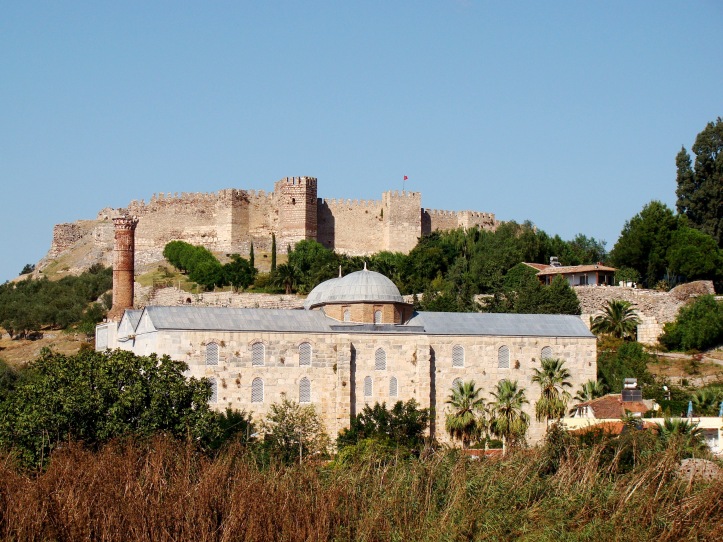
Ephesians were incorporated into the Ottoman Empire for the first time in 1390. The Central Asian warlord Tamerlane defeated the Ottomans in Anatolia in 1402, and the Ottoman sultan Bayezid I died in captivity. The region was restored to the Anatolian beyliks. After a period of unrest, the region was again incorporated into the Ottoman Empire in 1425. Ephesus was completely abandoned by the 15th century and left to fall into ruins.
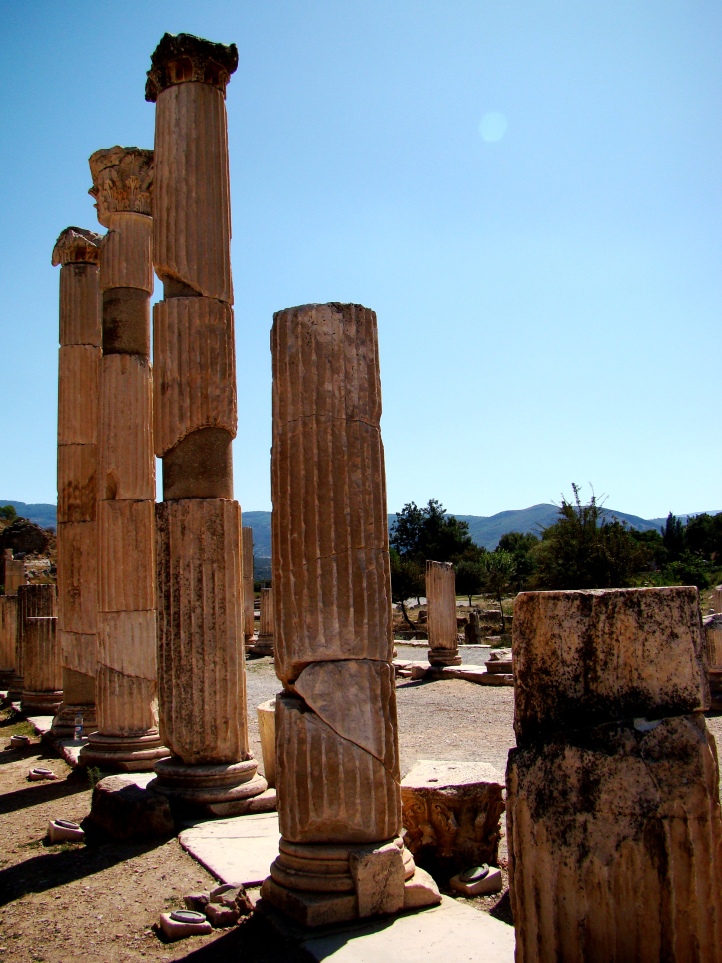
The Temple of Artemis, is represented only by one inconspicuous column, revealed during an archaeological excavation by the British Museum in the 1870s. The Temple of Artemis, was one of the seven churches of Asia that are cited in the Book of Revelations, proving how old and important this temple was.
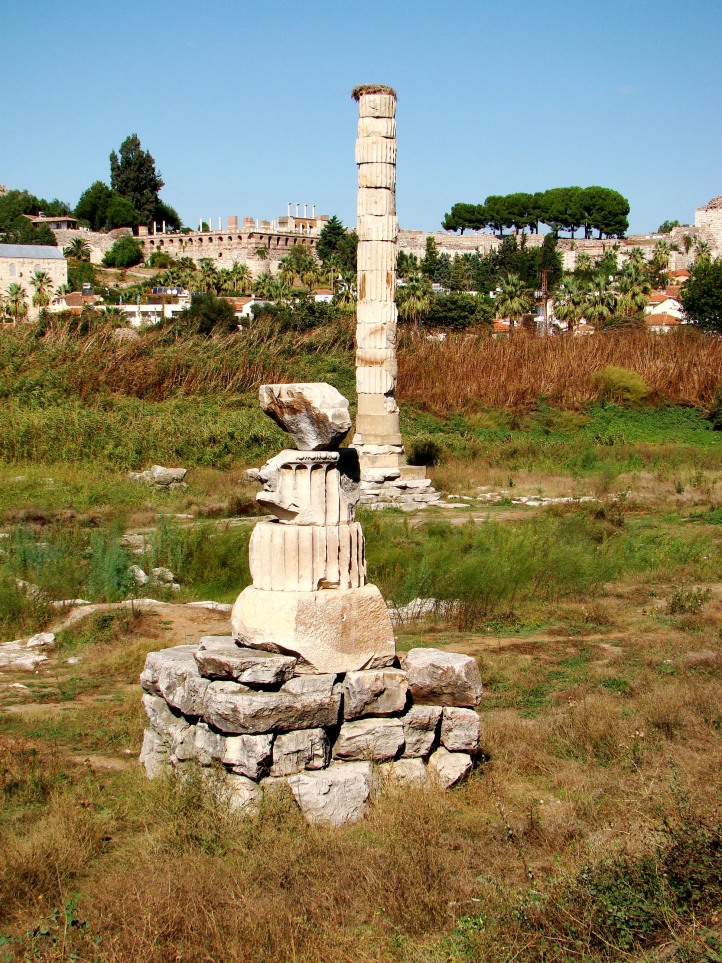
If you look at the history of this amazing place it had to rise out of the ashes like a phoenix more than once but lost in the end.
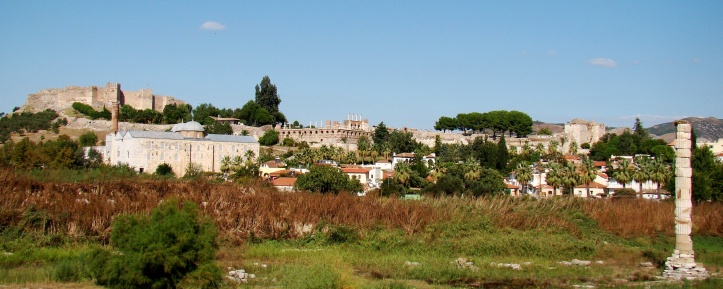
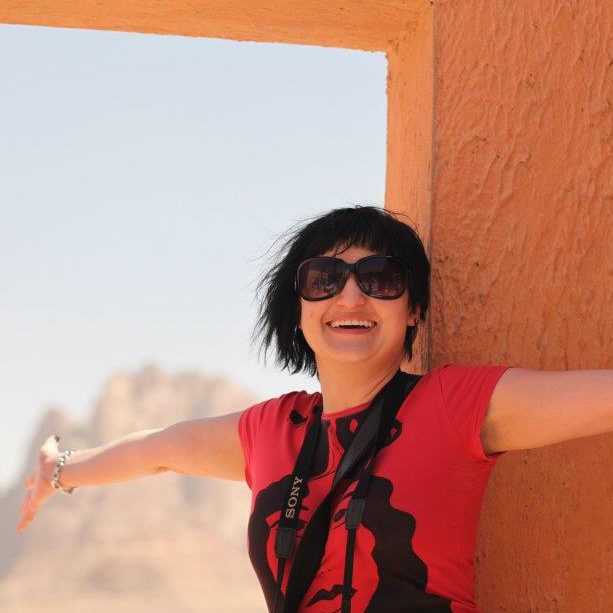
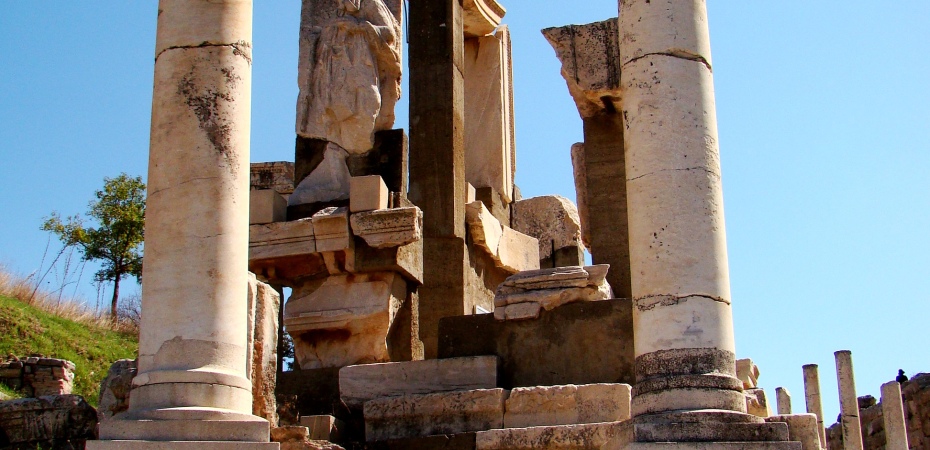















[…] Ephesus which was established as a port, used to be the most important commercial or trade centre of the ancient world due to its very fertile valley and its strategic location. It was definitely a magnificent city during its prime and was filled with many important structures. […]
LikeLike
Reblogged this on mapsworldwide blog.
LikeLiked by 1 person
A huge thank you for the re-blog!
LikeLike
I visited Ephesus in October and it was stil very busy with visitors. The Temple is a real disappointment isn’t it? I liked some of the other ancient sites near by just as much. Did you visit any of the others?
LikeLiked by 1 person
I agree, I thought there would be more of the temple that survived. I think my favourite part was the Library of Ephesus. With such a facade the building must have been amazing.
LikeLike
Yes, I agree!
LikeLike
What a great collection of pictures and thanks for providing so much information about the place. I would love to visit Ephesus – hopefully, someday!
LikeLiked by 1 person
Thank you Constance. I learnt a lot about Ephesus while doing my research for this blog post.
LikeLike
Beautiful photos and post Janaline. Ephesus was one of the highlight of our visit to Turkey.
LikeLiked by 1 person
Thank you Madhu! It is bound to be at the top of most Turkey explorer’s lists!
LikeLike
Oh man, that looks fantastic! I am very, very jealous. I want to see that place. Does it have an amazing vibe? When visiting ancient places I always think they have a unique “feel” to them that you won’t find anywhere else. Terrific pics. I love them all.
LikeLiked by 1 person
Thank you! It does have a great vibe. As you walk down the marble road among these ruins it feels as if you are stepping back into time.
LikeLike
Reblogged this on Blog of Things:.
LikeLiked by 1 person
A massive thank you for the re-blog Jeff!!
LikeLike
Wonderful post. So nice to have an explanation of what the pictures show.
LikeLiked by 1 person
Thanks Marie! Must admit I think I am learning more about Ephesus now in my research than when I was actually walking through its beautiful streets.
LikeLike
Interesting post! Brought back many good memories for me. Thanks!
LikeLiked by 1 person
Glad I could take you for a walk down memory lane!
LikeLiked by 1 person
You missed the best part about Herostratus. He burnt it down solely to be remembered. He just wanted to be famous, so he burnt down a wonder of the world. To spite him, it was made illegal to mention his name, but luckily for him, it got recorded anyway, and so now we remember him, so he got what he wanted.
Additionally, according to legend, that was the day that Alexander the Great was born, and it was said that the gods were too busy attending to his birth to protect the temple.
LikeLiked by 2 people
Excellent, I have never heard that before, thanks for sharing! Cant believe someone would deliberately destroy one of the wonders of the world.
LikeLike
What a glorious place! Wow!
LikeLiked by 1 person
It is one of my favourite “ruins” that I have explored so far.
LikeLike
This is high on my list of must-visits!
LikeLiked by 1 person
I am so glad Sue, it is amazing! As you walk through the streets and the ruins you can still imagine what it must have looked like ages ago when it was a thriving city.
LikeLiked by 1 person
I used to work on a cruise ship for a long time, and had a guided tour through Ephesus several times. It is a wonderful place to wander through, as you can still imagine the roads, the churches, the library and the life there much better than on most other ancient places in the world I have seen. When you are there it is a shattered place, yet you have the feeling, all this destruction has happened just 10 years ago. In the old amphitheatre of Ephesus, where Paulus used to speak to the people, I onced experienced a classical concert with 8 musicians (Cello, Violin, Flute) under a full moon in a still summer night. As the world around the theatre was lying in the dark we completey lost track of the present, it was absolutely magic!
LikeLiked by 3 people
Wow that must have been an amazing experience! I read that they still hold concerts in the Great Theater and would love to attend one someday. You are right, as you walk through the city it is quite easy to imagine what it must have looked like ages ago…
LikeLike
So there is no living town centre or even village in Ephesus any more? I suppose that is lucky in the way that at least some of the structures then remain. I’d love to see all that with my own eyes one day. Such an interesting history!
LikeLiked by 1 person
It does help a bit with the restoration but so much of the history of this magnificent place is lost along with all its inhabitants and culture. I do hope you get to walk down the marble road someday and experience all that Ephesus has to offer.
LikeLiked by 2 people